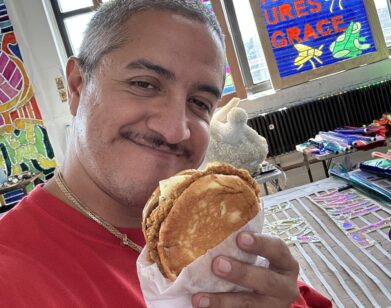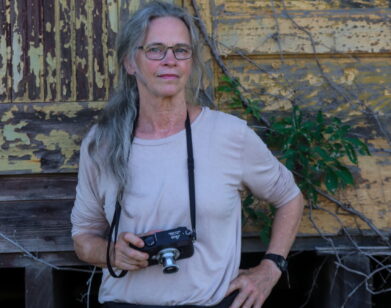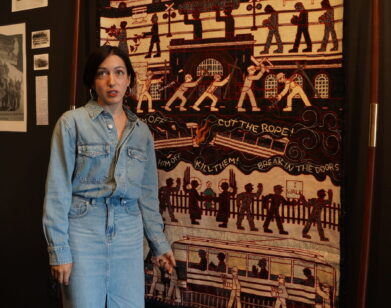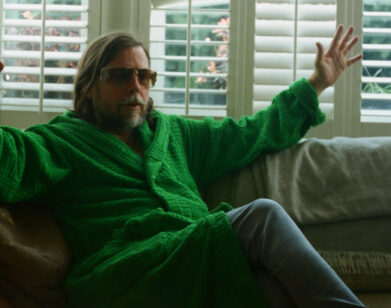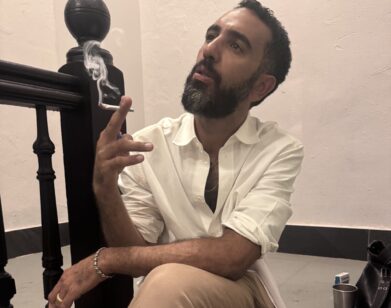Andrea Rosen
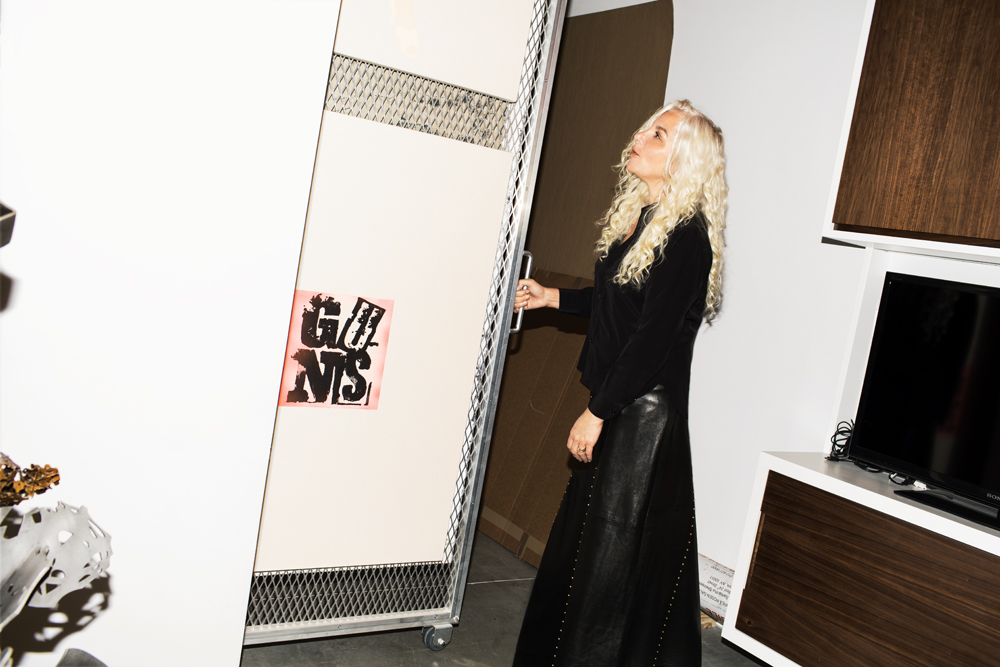
ANDREA ROSEN AT HER GALLERY IN NEW YORK, OCTOBER 2014. ALL CLOTHING AND ACCESSORIES: ROSEN’S OWN. STYLING: ANDREAS KOKKINO. HAIR PRODUCTS: LAVETT & CHIN, INCLUDING SEA SALT/TEXTURIZING MIST. HAIR: DAVID VON CANNON/STREETERS. MAKEUP: SIR JOHN FOR DIORSHOW/ STREETERS.
In January, Andrea Rosen Gallery celebrates 25 years of exhibiting some of the most stimulating and demanding art ever shown in New York. In honor of the anniversary, Rosen looks back at her days of starting the gallery:
“I moved to New York in ’84, almost the day I graduated from college in Canada. I remember driving down in a van with my mother and brother, and sending out résumés without really knowing anything about the New York art world. I worked in a few galleries, like Diane Brown, that were super rigorous and had really great taste. Then I left the art world for a year and half to get a master’s in East Asian studies. I thought I was going to venture off into an entirely different field, but I changed my mind. I started working as the director of Daniel Newburg Gallery. We did shows on John Armleder, Cady Noland, and Blinky Palermo between ’87 and ’89. I saw how Danny thought about history and historical material in relation to contemporary work. That experience set a key part of my program in motion-to juxtapose historical material with contemporary work or even just to juxtapose artists working out of distinct histories. How do you put works in context with each other in a way that allows you to see more in them? I hate exhibitions that are simply thematic and everything has to fit a concept. I’m more interested in works that expand our perception of what we might already think. I’ve often thought that the more famous something is, the narrower our reading of it is-it sort of gets boiled down to a single line. I’m more interested in reinvigorating our perceptions and not seeing work in a void.
“Nineteen eighty-nine was an interesting moment. The art world tends to be about ten years ahead of the rest of culture, and that time period was a kind of precursor to what would happen at the millennium, when everyone was scared that something drastic was going to happen and time was going to stop. In 1989 and 1990, people were questioning the validity of art, whether art was going to sustain itself. That’s why an artist like Robert Gober was influential to me. He was making work that was deeply content-filled but not didactic. His work can be political but it’s also about a real, visceral experience. I think that’s what spurred me to start the gallery-I saw these artists of my generation or a few years older who were questioning and realizing that works could be exacting and intellectual and also visceral and vital. You have to be able to feel the work. The work I don’t respond to is the kind where there’s no break between the manifestation of the idea and the actual end product. Like, nothing mysterious happens between the idea and the ultimate form it takes. So I gravitated to artists who seemed to be saying, ‘The art world is not coming to an end,’ that there is the possibility of new ideas and for work that speaks for itself. I don’t think my gallery was a conscious reaction to where the art world was going in the ’80s-I was probably too naive for that-but I was looking to gallerists like Colin de Land, Pat Hearn, and Lisa Spellman, whom I felt shared a similar ideology.
“I was 27 when I opened the gallery. It was located at 130 Prince Street in the Bakery Building, which was quite a scene-it was the new, seemingly fancy building of galleries. I was friends with Rudolf Stingel and I remember saying to him, ‘I’m going to take my time,’ and he said, ‘You have to do it quickly. You have to open immediately.’ I didn’t really understand the urgency and maybe neither did he, but I listened to him, which ended up being important because the recession happened about three months later, and you probably couldn’t have opened a gallery after that.
“Felix Gonzalez-Torres was my first show-on January 20, 1990. I must have gone to dozens of studio visits each week. I’m not someone who believes in divine intervention, but Felix, for me, was the closest thing to it. In my mind, he was already an incredibly important artist who I assumed would have no interest in showing with a new gallery, which wasn’t the case. Felix being my first show definitely set the tone for a lot of the ideas I wanted to explore with the gallery. One of the things that Felix taught me was that even if a work is misinterpreted for ten years, it’s not my responsibility to change that interpretation. If it’s good and worthy, it will change. It was a confidence about the future. So Felix was my first show. The exhibition was of his paper-stack works.”

